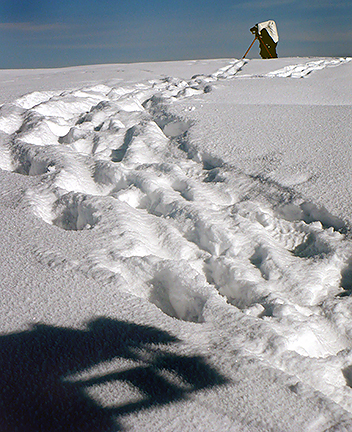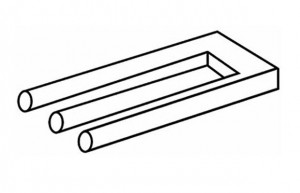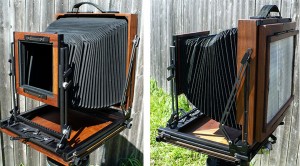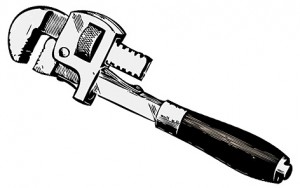*NEWS*: 2010 ANNUAL ULF FILM ORDERING WINDOW NOW OPEN
The ILFORD PHOTO annual ULF film ordering window for 2010 is now open.
This annual campaign allows ULF photographers the opportunity to order special sizes of ILFORD sheet film with no minimum order quantity.
Photographers have until Friday 11th June 2010 to place their orders with Authorised Dealers. The factory at Mobberley, Cheshire, England, expect to have the finished items with Dealers in the UK during August, and USA during September.
To download a full list of the items available in this campaign and for a list of Authorised Dealers Click here
ILFORD PHOTO ENSURES A FUTURE FOR BLACK AND WHITE

ILFORD PHOTO ENSURES A FUTURE FOR BLACK AND WHITE
12th March 2010
Iconic black and white brand underlines commitment to existing product range
9 March 2010: ILFORD PHOTO has issued a commitment to all black and white photography enthusiasts that despite other brands’ products becoming discontinued elsewhere in the industry, it will continue to support its existing range of mono photographic products for the foreseeable future.
Numerous black and white specialist products have been discontinued by other manufacturers in recent months and as the only dedicated black and white photographic brand, ILFORD PHOTO issued the following statement today reassuring customers that it has no plans for downsizing its product range.
Steven Brierley, Marketing Director for ILFORD PHOTO commented: “Over the course of our 130 year heritage, ILFORD PHOTO has become more than just another photographic company – many of our customers see us as the custodians of the future of black and white photography.
“Due to recent news from many parts of the industry that some black and white products are being discontinued, we have had a number of queries from anxious customers asking about the future of our own range. As such, we want to confirm that we have no plans to reduce our range in any way.”
ILFORD PHOTO, through its parent company HARMAN technology, has pioneered a number of campaigns in the past to demonstrate its commitment to the future of black and white analogue photography, including the ‘Defend the Darkroom’ programme and its calendar of photo education materclasses.
JB
WHY MODIFY THE CAMERA
 Why on earth would someone take a new, perfectly good, working camera and make numerous modifications to the original design? Maybe more to the point, who would do such a thing? Well, I would! Especially if it makes the functionality of the device more easily fit my mode and way of working.
Why on earth would someone take a new, perfectly good, working camera and make numerous modifications to the original design? Maybe more to the point, who would do such a thing? Well, I would! Especially if it makes the functionality of the device more easily fit my mode and way of working.
I have said this many times and I will repeat it here; I want the hardware involved in the process of making a photograph to be as transparent as possible. By transparent, I mean that the equipment should not be a distraction when out in the field making an image. I want the hardware to fit my way of working so well that I do not have to concentrate on working with it. I do not want to have to fumble with the camera and be distracted by some aspect of its operation that is not fluid in its use.
The way I make my cameras as transparent as possible is to modify them to whatever extent necessary to make them fit me. Yes, this requires I disassemble the camera and make modifications. I would rather do this now, in my shop, where I can work out these things so they do not hamper me later in the field.
What is all of this about? Well, I just acquired a new K.B. Canham 8×10 camera and in order to make it fit me better, I had to make a few modifications. If you are interested in seeing what I did, take a look at “NOTHING HERE REMAINS THE SAME; PERSONALIZING MY K.B. CANHAM 8X10” for a look at what I did.
Have fun reading this account, but remember kids. . . you may not want to try this at home!
JB Harlin
DON’T SCRATCH YOUR SINK
 If you build you own darkroom sink or use a commercially available unit, you need something to protect the floor of the sink from scratches and abrasions. It has been a common practice to construct wooden Duck Boards for the bottom of the darkroom sink. These work well, they protect the sink, and allow water to drain, but wood is hard to waterproof and keep from warping.
If you build you own darkroom sink or use a commercially available unit, you need something to protect the floor of the sink from scratches and abrasions. It has been a common practice to construct wooden Duck Boards for the bottom of the darkroom sink. These work well, they protect the sink, and allow water to drain, but wood is hard to waterproof and keep from warping.
I have heard of people using plastic lighting grids or plastic rods in the sink, but I have never tired them. I have constructed and used the usual wooden Duck Boards for years. Then I found something even better.
Dri-Dek® is sold as an anti-fatigue flooring for use in commercial work areas such as industrial manufacturing or commercial kitchens. It comes in 12” interlocking squares or rolls. This is a soft, flexible Vinyl that is perfect for the floor of a darkroom sink.
We installed Dri-Dek® in our sink two years ago and it has been an excellent investment. Water easily runs through and under the lattice work, it protects the sink floor, and it provides a soft, yet firm surface on which to work. Note, that the Vinyl does stain when exposed to some chemicals, like Amidol and Pyro, but it has remained flexible and I would not hesitate to recommend it to replace those old, warped wooden Duck Boards.
For more information about Dri-Dek® click HERE.
JB
WHERE, WHEN & HOW
 They say one image is worth a thousand words, or something like that. I have been asked numerous times to describe the making of some of my photographs. It is strange that I can remember a lot of the details of the moment. I can recall the feel of the place, and the excitement of being there in my mind’s eye. This coupled with my field notes detailing the date, time, and technical information, recreates a somewhat in depth story of the making of a photograph.
They say one image is worth a thousand words, or something like that. I have been asked numerous times to describe the making of some of my photographs. It is strange that I can remember a lot of the details of the moment. I can recall the feel of the place, and the excitement of being there in my mind’s eye. This coupled with my field notes detailing the date, time, and technical information, recreates a somewhat in depth story of the making of a photograph.
I have just started what I plan to be an ongoing project. I will take selected photographs and try my best to tell the story of how the completed interpretation was created. Hopefully there will be something of interest for everyone interested in all aspects of photography. Each installment will cover the making of one photograph, both artistically and technically.
I invite you to stop by the new “WHERE, WHEN & HOW: The Creative Interpretation“ area of our web site.
Enjoy,
JB
TALKING OF PHOTOGRAPHS
 I keep harping on the idea that photography is about the photograph and not the equipment. Or, at least, that is the direction I prefer to take when it comes to the discussion of photography. Talking shop about the gear is the easy part. Talking about the photograph, and the makeup of an image is much more difficult.
I keep harping on the idea that photography is about the photograph and not the equipment. Or, at least, that is the direction I prefer to take when it comes to the discussion of photography. Talking shop about the gear is the easy part. Talking about the photograph, and the makeup of an image is much more difficult.
The reason the hardware is much easier to discuss is because it is a real, tangible, thing. A piece of hardware you can pick up and hold it in your hand. It has a name and a specific function. You can learn to use a piece of equipment. Most everything about it is well defined and it works in a particular way.
What makes up art is something that is only a feeling. You either like what you see, or you don’t. Looking at some images triggers a feeling or memory that touches you deeply, but cannot be expressed with words. What is definitely appealing to one person is completely ignored by another. To express a great piece of art in words mostly detracts from its emotional content. You just can’t explain a great image.
I am much more interested in hearing how a person was attracted to something, which in turn led them to be motivated to make the photo, rather than the f-stop and shutter speed they used. There are those times when you just KNOW it is time to expose film. The question is, how do you know?
This is the hardest part of artistic photography. There are those that have attempted to explain what is pleasing to the eye by lowering themselves to a form of art speak. Stringing big words together does nothing but make a lot of squiggly lines on paper. Talking for the sake of talk and saying nothing, is what politicians base their careers on.
I am interested in understanding the thought process, but some things are just not well suited for words. Sometimes it is best to just look and enjoy. Below are a few interesting quotes from David Vestal.
-
“When you must use words, use plain, clear ones that say exactly what you mean. That’s hard. Art jargon is easy but it only impresses fools. It turns intelligent people off and tells them that the jargon-user is a fool.”
-
“Pompous wall labels that explain how your work transcends everything usually fool only curators and collectors.”
-
“Such instructions don’t work. People will see your work as they are ready to see it and no better, no matter how wonderful you tell them it is.”
Photo Techniques Advanced B&W Printing Photos 303, The Pratt Institute Handouts by David Vestal
CREATIVITY IS PERSONAL
 We joined a group of local LF photographers last Saturday for a gathering and group shoot at a local park. I have to say that we had a great time. Met some new friends and saw some old ones also. It was a fun time for sure and I am glad we were able to attend. There were nineteen people there and most every kind of camera you could imagine from DSLRs to 8x10s. There was most every level of experience, from beginner to seasoned pro. The talk was lively and the interaction was priceless.
We joined a group of local LF photographers last Saturday for a gathering and group shoot at a local park. I have to say that we had a great time. Met some new friends and saw some old ones also. It was a fun time for sure and I am glad we were able to attend. There were nineteen people there and most every kind of camera you could imagine from DSLRs to 8x10s. There was most every level of experience, from beginner to seasoned pro. The talk was lively and the interaction was priceless.
I hauled an 8×10 camera, set it up with several lenses, and let those that were interested look and ask questions. The thing is, I did not expose a single sheet of film. I really had no intention of making an exposure. I was there to enjoy the interaction with like-minded folks. I was there to talk shop. This was a gathering organized for the purpose of letting the interested see what a view camera is and how it works. This is the best way to learn whether you should look more seriously into LF, or not. Working with a view camera is not for everyone. I would never recommend to anyone that they run out and buy a big camera.
I took film, just in case something did materialize, but I never put a holder in the camera. I, for the most part, had no intention of making photographs. Certainly there were some visually interesting things going on in the park, but I was not in the mode of making images. I was in the Left Brain Mode of talking about cameras and how they work.
Creativity is something that I have to prepare for. I have to put my mind into Right Brain Mode to go out to shoot film. I need to be, for the most part, alone with myself in a visually stimulating environment in order to work efficiently. For me, creativity is an extremely personal thing that requires every ounce of my attention. I have learned that I seldom ever produce anything of merit when I am with a group. There are far too many distractions for me to think productively. So for an outing like this, I just go to enjoy the company and conversation about my favorite subject. If I find something that I feel requires my uninterrupted attention, I will go back later by my self to explore.
The most important thing about this outing was just being out there with others that share like interests. I love to talk shop, but I can’t do it and seriously photograph. I know this from years of experience, so we went to the park, met up with a great bunch of people. Talked each other to death, had lunch and enjoyed ourselves. It was not a day to be creative for me. It was a day to be social and have a lot of fun.
Almost forgot to mention. . . I picked up a new 8×10 camera. . . my first KB Canham!
JB
WHO MADE THAT WRENCH?
 I heard, or maybe read somewhere, that “Amateur photographers talk about equipment. . . Serious photographers talk about photographs!” Personally, I am much more interested in photographs than cameras. A camera is just a light-tight box that holds the lens and film.
I heard, or maybe read somewhere, that “Amateur photographers talk about equipment. . . Serious photographers talk about photographs!” Personally, I am much more interested in photographs than cameras. A camera is just a light-tight box that holds the lens and film.
Certainly it is important to have the proper tools in order to be successful at anything you attempt. Matters not whether you are building a bookcase, fixing a leaky kitchen faucet or making a photograph. But to obsess endlessly over your tool belt is not necessary. Think of it this way. You take your dream vacation to some really far away place you have always dreamed of visiting. Would you come back and tell everyone all of the details of where you visited, or would you go into excessive detail about the airplane that flew you there?
I defy anyone to look at a framed photograph hanging on the wall and tell me the camera, lens, film, or paper that was used. You would have to be a mind reader! Is the equipment necessary? Certainly! But equipment is only an apparatus necessary to reach an end. The camera is a tool, no more, nor no less, important than a wrench. All you really care about is that faucet in the kitchen stops dripping. Do you care about the name on that wrench?
What I care about is the finished photo on the wall. . . well. . . I have to admit that being out in the field searching for something to point the camera toward is also very important. But everything that goes on between those two moments is really of little interest to me, other than I having what I need to bridge the gap.


